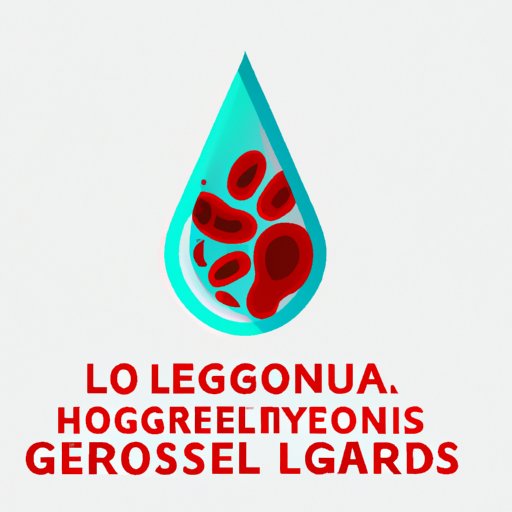
I. Introduction
Legionnaires Disease is a severe form of pneumonia caused by the Legionella bacteria. It was first identified in 1976 when an outbreak occurred at an American Legion convention in Philadelphia, resulting in the deaths of 29 people. The disease is spread through inhaling small droplets of contaminated water, which can come from sources such as cooling towers, hot tubs, fountains, and building water systems.
In this article, we will explore the contagiousness of Legionnaires Disease and the primary ways it can spread. We will also discuss key facts and myths surrounding this deadly illness, along with preventative measures that can be taken to reduce the risk of transmission.
II. Legionnaires Disease: What You Need to Know About Its Contagiousness
When we talk about a disease being contagious, we refer to the ability of the disease to spread from person to person or from environmental sources. Some diseases are much more contagious than others, and the contagiousness of Legionnaires Disease falls somewhere in the middle.
While Legionnaires Disease is not typically spread from person to person, it can be contracted through exposure to contaminated water sources. The bacteria that cause this illness thrive in warm, stagnant water, so sources such as cooling towers, hot tubs, and fountains are prime areas of concern.
III. How Legionnaires Disease Spreads and What You Can Do to Avoid It
The primary way that Legionnaires Disease spreads is through inhaling contaminated water droplets. When water containing Legionella bacteria is aerosolized, it can spread throughout a building or outdoor area where it can be inhaled by those nearby.
The best way to avoid exposure to contaminated water sources and reduce the risk of infection is by taking the following precautions:
- Clean and maintain cooling towers and other water systems regularly
- Properly disinfect hot tubs and other spa systems
- Prevent stagnation in building water systems by ensuring proper circulation
- Avoid exposure to mist or spray from water sources such as fountains or hoses
IV. The Facts About Legionnaires Disease Transmission
The bacteria responsible for Legionnaires Disease, Legionella, is naturally occurring and can be found in many types of water sources, including natural bodies of water and man-made systems.
When Legionella bacteria settle in stagnant water, such as in a cooling tower or building water system, they can multiply and grow. When water is aerosolized, such as through mist or spray from a fountain or air conditioning unit, people can inhale the contaminated droplets and contract Legionnaires Disease.
While the primary mode of transmission for Legionnaires Disease is through exposure to contaminated water sources, there have also been rare cases of person-to-person transmission. This is typically only possible when there is extreme exposure to droplets, such as in a healthcare setting where patients are particularly vulnerable to infection.
V. Is Legionnaires Disease Contagious? The Answer May Surprise You
There is some debate among experts about whether or not Legionnaires Disease should be categorized as a contagious disease. Some argue that since it is not transmitted from person to person, it does not meet the traditional criteria for a contagious illness.
However, when we consider the fact that Legionnaires Disease is transmitted through inhaling contaminated droplets from water sources, it is clear that it can be considered a contagious disease. While it may not spread through casual contact, the ability of the disease to spread to multiple people through shared environmental exposure is a key characteristic of many contagious illnesses.
VI. The Contagion Risk of Legionnaires Disease: Separating Fact from Fiction
There are many misconceptions about the contagiousness of Legionnaires Disease that can lead to misunderstandings and confusion about the risk of transmission.
One common myth is that Legionnaires Disease can only be contracted from large cooling towers or complex building water systems. However, the truth is that even small, individual air conditioning units or hot tubs can harbor Legionella bacteria and cause infection.
Another myth is that the disease can only be contracted by certain vulnerable populations, such as the elderly or those with weakened immune systems. While these populations may be at particular risk for severe illness or complications from Legionnaires Disease, anyone who inhales contaminated water droplets can contract the disease.
VII. Can You Catch Legionnaires Disease? Understanding the Contagiousness of this Deadly Illness
Legionnaires Disease is a serious illness that can result in severe pneumonia and other complications. While anyone can contract the disease, certain populations are more at risk, including those over 50 years old, smokers, and those with weakened immune systems.
Understanding the contagiousness of Legionnaires Disease is crucial for preventing outbreaks and protecting public health. By taking proper precautions and maintaining safe water systems, we can reduce the risk of infection and keep people safe from this deadly illness.
VIII. Preventing Legionnaires Disease Transmission: What Everyone Should Know
Preventing Legionnaires Disease transmission is possible through proper building maintenance and water system safety. Some important preventative actions that can be taken include:
- Regularly cleaning and disinfecting cooling towers and other water systems
- Flushing building water systems regularly
- Testing water for Legionella bacteria
- Encouraging employees and residents to report any signs of illness or exposure to contaminated water sources
During an outbreak or in high-risk settings, additional safety measures may be necessary, such as increasing the frequency of testing and disinfection or implementing temporary closure or restrictions on water sources.
IX. Conclusion
Legionnaires Disease is a contagious illness that can be contracted through exposure to contaminated water sources. Understanding the primary modes of transmission and properly maintaining safe water systems is crucial for preventing outbreaks and protecting public health.
By taking common-sense precautions and educating ourselves and others about the risks and preventative measures, we can reduce the risk of infection and keep ourselves and our communities safe from this deadly illness.





